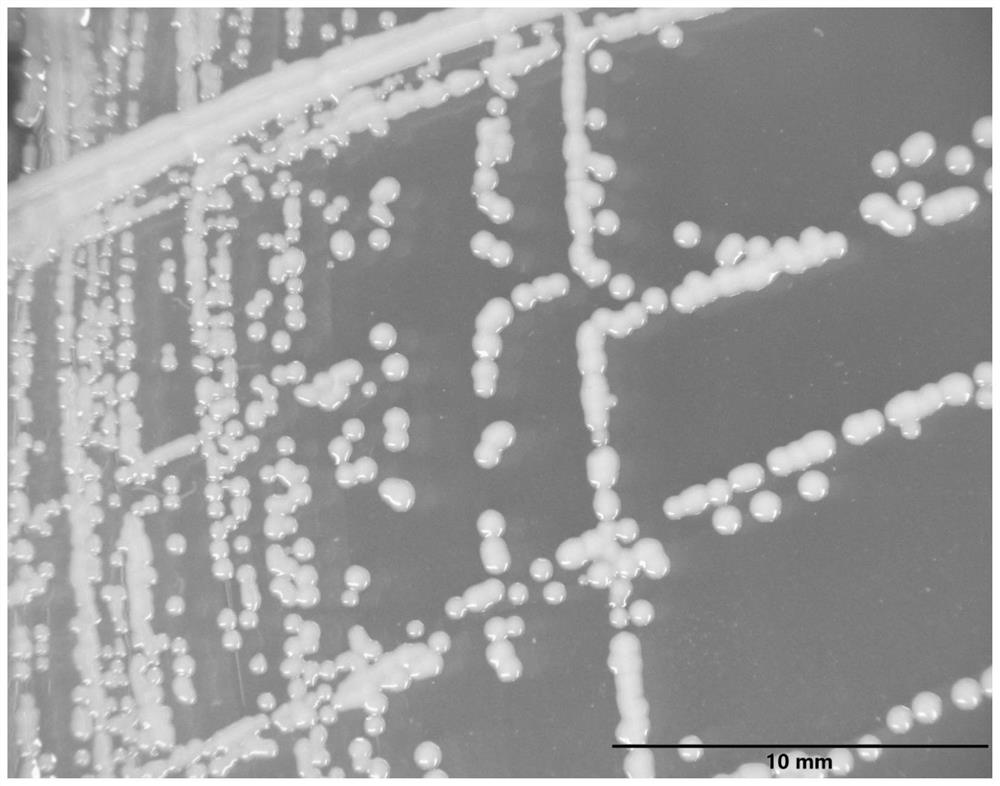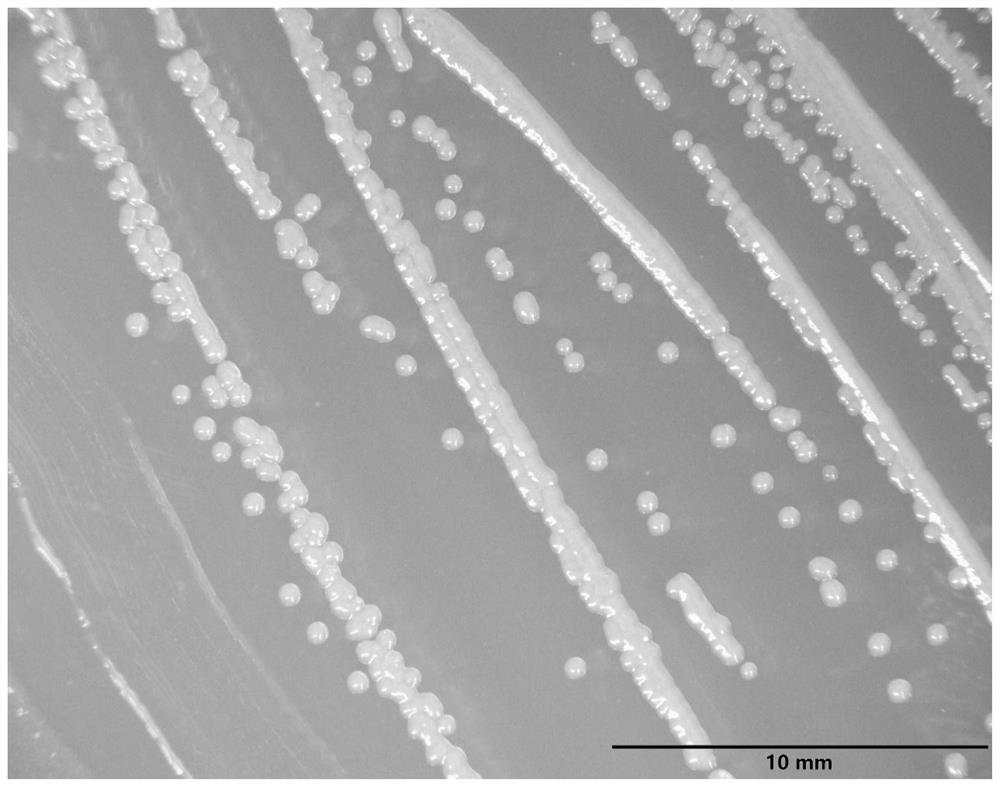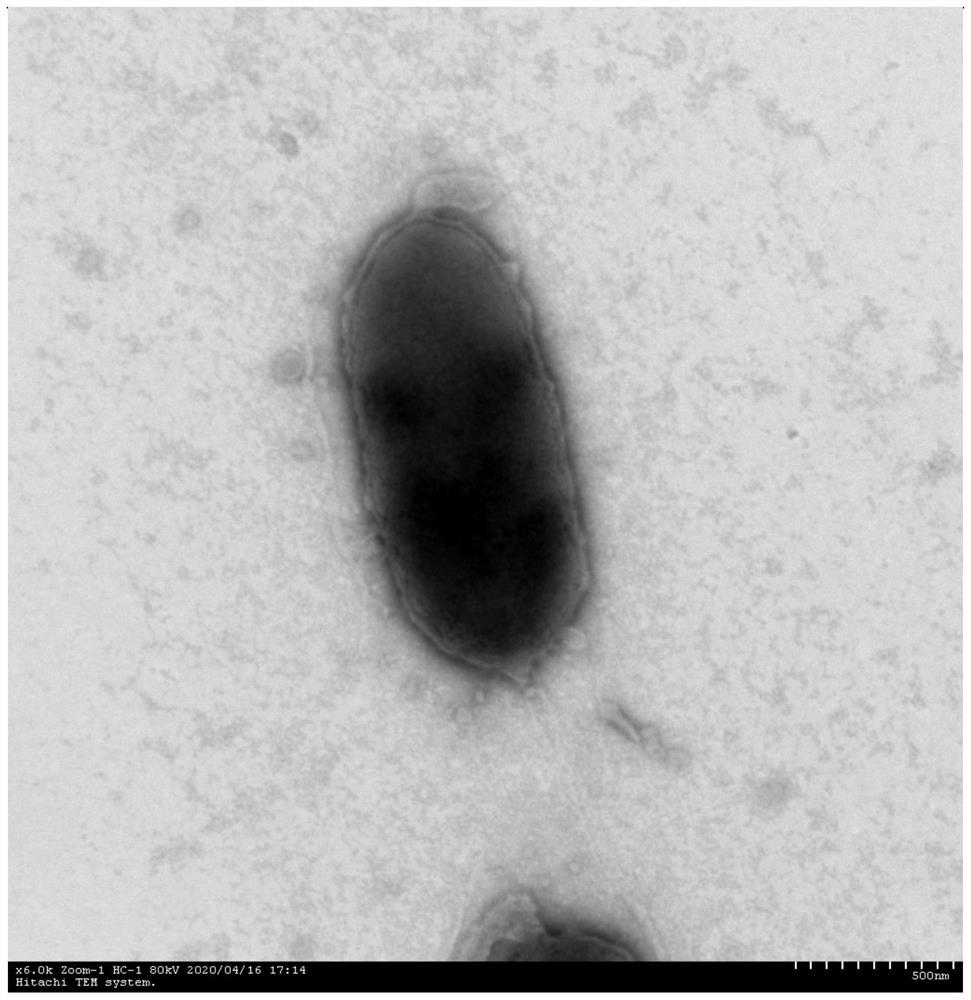Two multidrug-resistant, biofilm-forming animal pathogenic bacteria and their applications
A technology of animals and scented bacteria, applied in the field of microorganisms, can solve the problems of reducing the treatment effect of antibiotics, and achieve the effect of strengthening the ability to form biofilms
- Summary
- Abstract
- Description
- Claims
- Application Information
AI Technical Summary
Problems solved by technology
Method used
Image
Examples
Embodiment 1
[0030] Example 1: Isolation, purification and preservation of bacterial strains WP-1 and NP-2
[0031] Collect fresh feces from weaned piglets and nursery pigs, immediately put them into anaerobic sampling tanks, seal them, and bring them back to the laboratory as soon as possible. Take 1g of feces sample, add it to 30mL PBS, and then serially dilute to 10 -8 concentration. take 10 -6 、10 -7 and 10 -8 100 μL of each dilution was coated on a BHI (Qingdao Haibo) plate. At 37°C, observe after 2 days of culture. Colonies were picked, transferred and streaked on a fresh BHI plate for purification 3 times. Strains WP-1 and NP-2 were thus obtained
[0032] WP-1 and NP-2 were cultured using BHI liquid medium. The bacterial cells in the logarithmic growth phase were collected, resuspended in 20% (v / v) glycerol solution, and frozen in a -80°C refrigerator. At the same time, freeze-dried tubes of WP-1 and NP-2 were prepared by Guangdong Microbial Culture Collection Center and st...
Embodiment 2
[0033] Embodiment 2: bacterial strain WP-1 and NP-2 morphological description
[0034] On the BHI plate (Qingdao Haibo), after 48 hours of culture, the colony of strain WP-1 is white in color, about 0.5mm in diameter, round, smooth, opaque, uniform in texture, convex in the center, and neat in edge ( figure 1 ).
[0035] On the BHI plate (Qingdao Haibo), after 48 hours of culture, the colony of strain NP-2 is yellow in color, about 0.5mm in diameter, round, smooth, opaque, uniform in texture, convex in the center, and neat in edge ( figure 2 ).
[0036] Resuspend WP-1 and NP-2 monoclonals in logarithmic growth phase with sterile water, respectively. The cell morphology of WP-1 and NP-2 was observed and photographed using a transmission electron microscope.
[0037] The cell morphology of WP-1 and NP-2 were as follows image 3 and Figure 4 shown.
Embodiment 3
[0038] Example 3: Classification and identification of bacterial strains WP-1 and NP-2
[0039] The 16S rRNA genes of WP-1 and NP-2 were amplified using universal primers 27F and 1492R, and sent to Shanghai Meiji Biomedical Technology Co., Ltd. for sequencing. The nucleotide sequence of the 16S rRNA gene of strain WP-1 is shown in SEQ ID NO .1, the nucleotide sequence of the 16S rRNA gene of bacterial strain NP-2 is shown in SEQ ID NO.2.
[0040] The obtained two-terminal sequencing results were assembled. Compare in EZBioCloud database. Strain WP-1 and model bacteria Myroides odoratus DSM 2801 T It has the highest 16S rRNA gene similarity of 98.4%. Strain NP-2 and model bacteria Myroides odoratus DSM 2801 T It has the highest 16S rRNA gene similarity of 98.5%. The 16S rRNA gene similarity between strains WP-1 and NP-2 was 98.9%.
[0041] Genomic DNA of WP-1 and NP-2 was extracted. Sent to Shanghai Passino Biotechnology Co., Ltd. for sequencing using the IlluminaNovaSeq...
PUM
| Property | Measurement | Unit |
|---|---|---|
| diameter | aaaaa | aaaaa |
Abstract
Description
Claims
Application Information
 Login to View More
Login to View More - R&D
- Intellectual Property
- Life Sciences
- Materials
- Tech Scout
- Unparalleled Data Quality
- Higher Quality Content
- 60% Fewer Hallucinations
Browse by: Latest US Patents, China's latest patents, Technical Efficacy Thesaurus, Application Domain, Technology Topic, Popular Technical Reports.
© 2025 PatSnap. All rights reserved.Legal|Privacy policy|Modern Slavery Act Transparency Statement|Sitemap|About US| Contact US: help@patsnap.com



